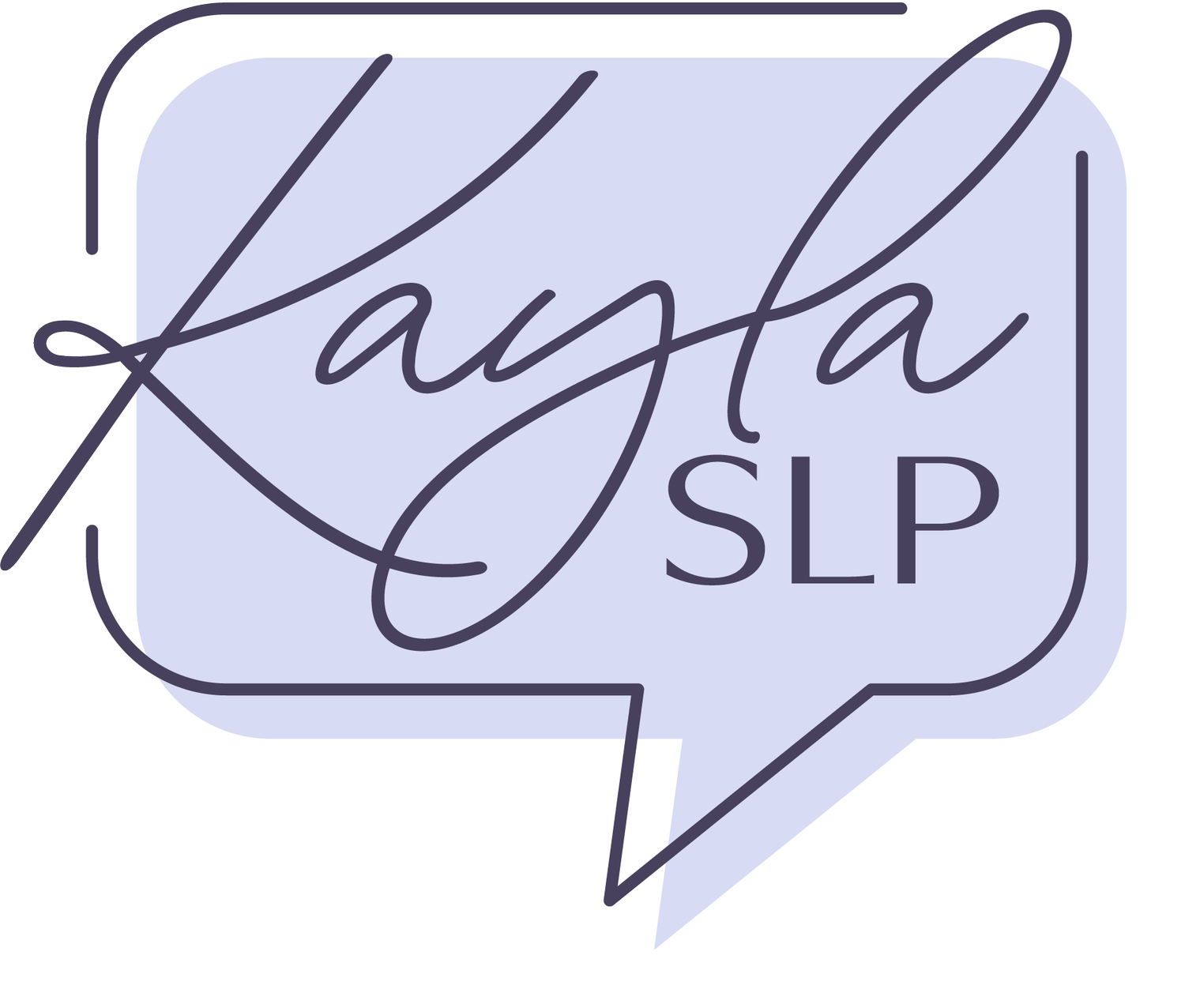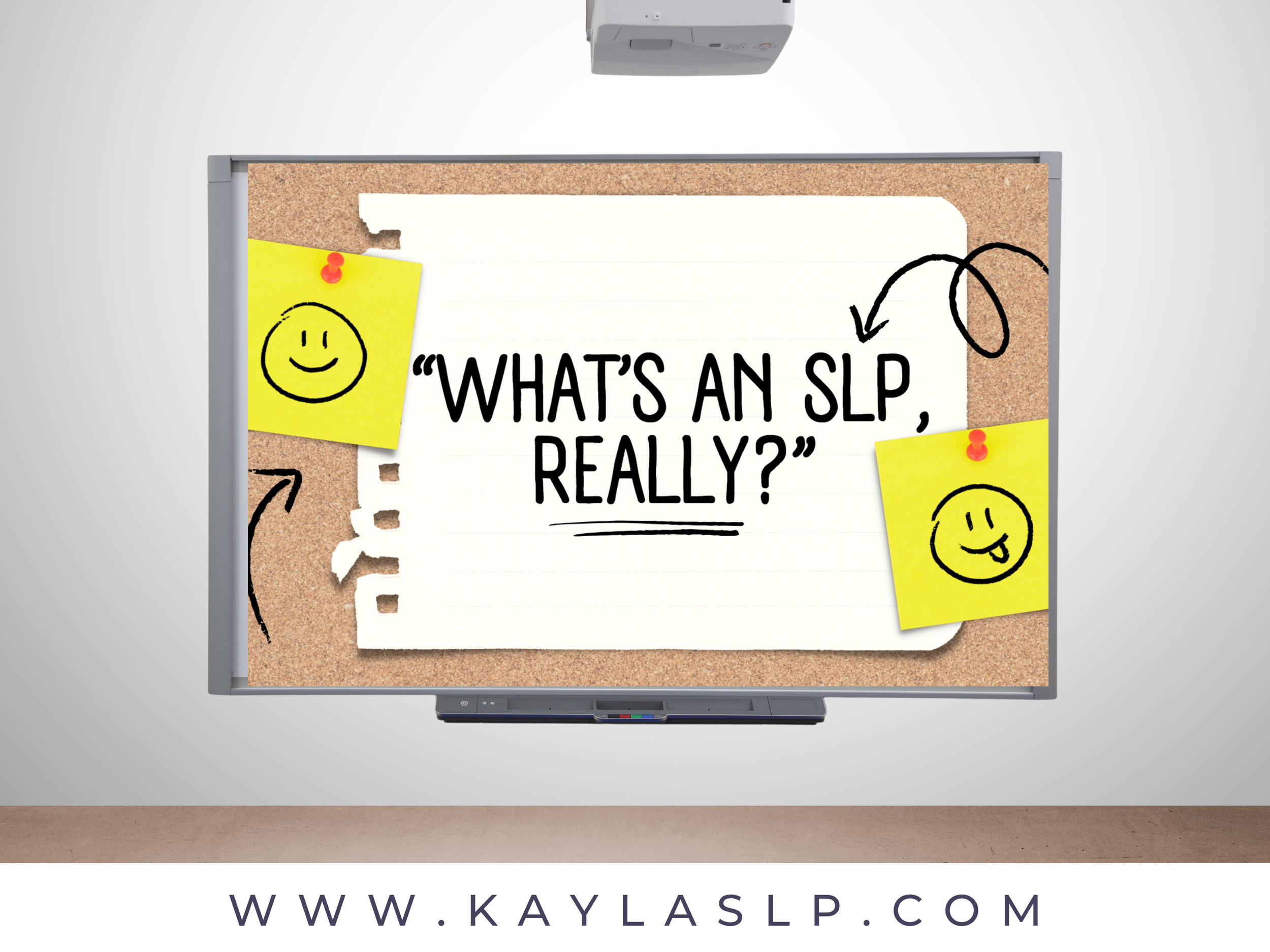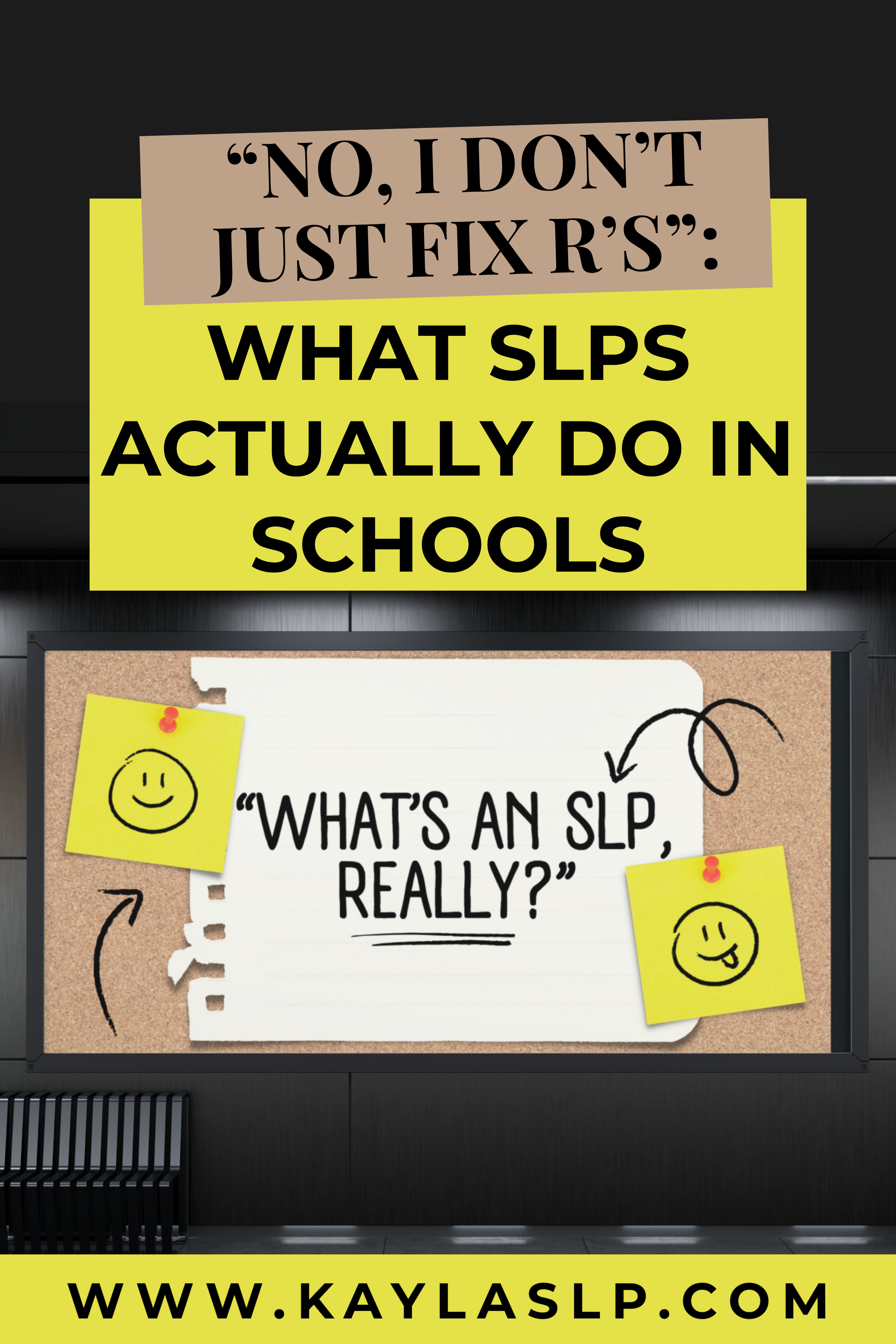“No, I Don’t Just Fix R’s”: What SLPs Actually Do in Schools
Click here to download the free presentation and use it at your next in-service!
I’ve been called a tutor.
An ESL teacher.
And most often, the speech teacher (I don’t coach debates, I promise).
But very rarely am I introduced as what I actually am:
A speech-language pathologist.
I don’t blame anyone for the confusion. Unless you’ve worked closely with an SLP, it’s easy to assume we’re the people who “help kids talk better.” And while that’s part of what we do, it’s just the tip of a very deep, evidence-based iceberg.
So today, let’s clear it up.
What Do School-Based SLPs Really Do?
Let’s break it down.
We support communication in all its forms:
Speaking clearly (articulation, fluency, voice)
Understanding and using language (grammar, vocabulary, following directions)
Social communication (turn-taking, conversation, problem-solving)
Aiding and honoring all forms of communication (ASL, AAC, etc.)
If a child is struggling to connect, express, or participate, we’re in their corner.
Where You’ll Find Us (Spoiler: Everywhere)
SLPs don’t just live in the therapy room. You’ll also see us:
Co-teaching or supporting in classrooms
Sitting in IEP meetings (sometimes 4+ in a day)
Running evaluations and screenings
Coaching staff on communication strategies
Tracking progress, collecting data, and yes… writing allllll the documentation
It’s not all glamorous, but it matters.
Why It Matters in Your Classroom
You might not always see the impact of what we do, but you feel it.
That student who finally follows multi-step directions
The one who stops interrupting and starts raising their hand
The reader who suddenly connects with a story’s beginning, middle, and end
Fewer “behavior issues” that were really communication breakdowns
That’s our work, woven into the fabric of your classroom.
The Magic of an In-Service
A while back, I was feeling frustrated. Staff didn’t understand my role. Referrals didn’t make sense. Strategies weren’t followed. So, I did something simple: I gave a 5-minute “SLP 101” talk at a staff meeting.
No jargon. No forms. No information overload. Just:
What I do
How I support learning
How teachers can collaborate with me
The difference? Instant. Teachers started asking better questions. Sharing more helpful observations. And using the carryover tips I shared.
All because they finally knew what I did.
Want to Do the Same?
To help other SLPs (and schools) start this conversation, I created a free 5–10 slide presentation called: “What’s an SLP, Really?”
It’s short, to the point, and designed to help you advocate for your role without needing to reinvent the wheel.
You can click here to download it or use it as a starting point to build your own.
Final Thought
We do important work, and it deserves to be seen, understood, and respected. Sometimes that starts with us raising our hands and saying, “Actually, here’s what I do, and here’s how I can help.”
Let’s keep making the invisible work visible.
We’re not “just the speech teacher.”
We’re the communication experts in the room.
And our students? They’re better off because of it.
Love this post?
Pin it for later!
Save this blog post to your favorite Pinterest board so you can come back to it anytime.


